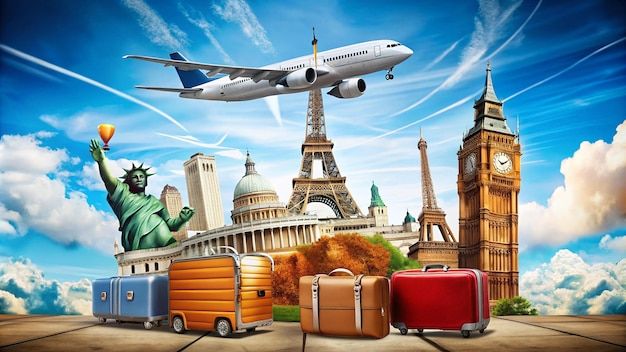Whether it’s backpacks or rolling suitcases, almost nobody boards an aircraft without carrying something along. Many travelers opt to bring only these items—partially to avoid paying fees for checked baggage, as many carriers increasingly charge extra for this service.
However, situations have become increasingly unmanageable during certain flights. “A lot of passengers are bringing multiple pieces of carry-on baggage, many of which are oversized. This occurs either due to their lack of knowledge about the airline’s baggage regulations or despite being aware of them and choosing to disregard them,” explains Nikolaus Moehren, who serves as a cabin manager for the German-based company Lufthansa.
He explains that this leads to further issues since on completely booked flights, the overhead bins often become overfilled before boarding is even complete.
The simplest step would be to review your reservation prior to your flight and confirm exactly what items you’re permitted to bring along.
A matter of centimeters and kilograms
This suggestion is made not just to spare the flight attendants’ stress and to be considerate of fellow travelers, but also to prevent unnecessary expenses. Each airline has specific regulations about the size and weight limits for carry-on baggage, which can differ between carriers.
If you break these rules, you shouldn’t count on the airline being lenient, and you might actually have to pay extra fees for any bags that exceed size and weight limits upon arrival at the airport.
For travelers flying with Lufthansa and Turkish Airlines in economy class, the permitted luggage dimensions are 55 x 40 x 23 cm. In comparison, American Airlines and Swiss have slightly varied allowances for carry-ons at 56 x 36 x 23 cm.
Low-cost carriers such as Europe’s biggest airline, Ryanair, typically permit just a compact personal item (measuring 40 x 20 x 25 cm for Ryanair) at no extra cost. For anything bigger, up to dimensions of 55 x 40 x 20 cm for Ryanair, passengers usually face additional charges.
These instances clearly indicate that it is prudent to heed Moehren’s recommendation: prior to your journey, verify precisely what items you are permitted to bring onboard.
Several airlines have recently decreased the allowed dimensions for carry-on bags.Budget Airlines
EasyJet
,
Ryanair
and
Wizzair
, among others, will subsequently provide you with a flat fee for presenting a bigger suitcase.
Relying on an airline to overlook a bit of additional length is already a gamble for the carriers involved, and reports indicate that attempting this is particularly ill-advised when flying within the U.S. You can expect your luggage to undergo thorough measurement on your inaugural flight, with all applicable fees being strictly enforced right from the start.
What items can be carried in your carry-on bag?
In Europe, the standard regulation for liquids in carry-on baggage stipulates that they must be placed in individual containers not exceeding 100 milliliters each. These containers should then be packed into a clear plastic bag with a total capacity of no more than one liter.
Even though the liquid restriction had been paused at certain security checkpoints in Europe when they introduced new CT baggage screening systems, it resumed from early September 2024. As such, bigger containers continue to be prohibited in carry-on bags. However, an exemption applies to items bought post-security check, like those available in duty-free stores.
Although a regular bottle of shower gel may be kept at home or packed in your checked bags, certain items aren’t allowed in the cargo hold; for instance, power banks should be brought as carry-on due to safety concerns. However, the specific limits and capacities differ among airlines.
Regardless, each airline offers quite comprehensive details online about what items you can and cannot bring in your carry-on baggage.












